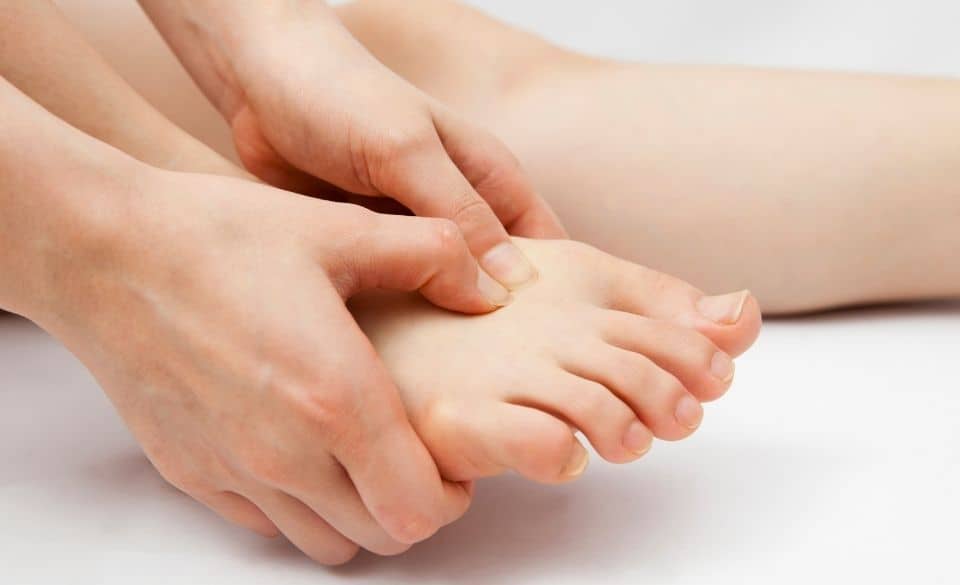
Top of Foot Pain From Running & After – What You Should Know?
Page Contents
Unfortunately, many runners experience top of foot pain when running. Knowing this, we’ve put together a list of the signs and treatments. So if you experience top of the foot pain after running hopefully this will help get you back out there running again.
Most regular runners feel top of foot discomfort at some stage, and determining the cause is critical to being able to know when you can start running again.
The positive news is that among competitive athletes, the most frequent source of top of foot discomfort is wearing inappropriate footwear and lacing the shoes too tight.
First and foremost, the most severe injuries involved with top of foot pain must be ruled out.
So what are the most common foot Injuries from running?
The following are the most common injuries for runners who have top of foot pain after running.
– Extensor Tendonitis
– Fracture
Unfortunately, to fully heal, both injuries need at least a six to eight weeks recovery time before you start hitting the pavement again.
Foot Stress Fracture Running – Causes & Treatments
A stress fracture occurs when one of the bones on the top of the foot breaks.
Stress fractures occur when the foot is overused on a regular basis, putting too much pressure on the bones.
If you increase your workout speed, length, or frequency too soon, you risk forming a stress fracture. This is why stress fractures in runners are so common.
An x-ray by the doctor is the only way to check that you have a stress fracture.
The pain you may experience: A stress fracture begins with minor discomfort and eventually worsens over time. It’s possible that the pain will only occur while you’re running. The pressure on the top of the foot will intensify as the condition progresses, and it will last longer. The pain from an acute stress fracture can interfere with daily tasks such as walking and standing.
Swelling and tenderness: Swelling and tenderness can range from moderate to extreme. This all depends on where the stress fracture is located.
Treatment for a stress fracture: If you have signs of a stress injury or have been diagnosed with one, it is important that you abandon all exercise that places weight on the foot. Pool running or aqua jogging is a good alternative during the recovery period.
A stress fracture takes most runners six to eight weeks to recover. Because of this, you mustn’t try to run until you are pain-free walking and able to load weight on the foot.
Every two hours, apply ice compression for 10-15 minutes. Doing so will help reduce swelling and discomfort. Hot/cold therapy is may also aid in the reduction of swelling. Another way to reduce swelling and discomfort is to elevate the foot for a while.
Unfortunately, if you have a large stress fracture or a fracture in a vital place, your doctor may recommend a brace or cast. This will ultimately limit any type of exercise during the recovery period.
Last and not least, your doctor may recommend or prescribe some medication to relieve pain and facilitate healing. Usually, these are much more effective than over-the-counter pain relievers.

Extensor Tendonitis Running – Causes & Treatments
Extensor tendonitis (top of foot tendonitis) is an infection or irritation of the tendons caused by excessive exercise. This is common among athletes and a runner may feel top of foot pain when running and resting. This pain is often felt around the midpoint of the foot (dorsal – Top).
Some basic signs you may be experiencing extensor tendonitis from running is to draw your toes up towards you while resisting the action with your hand. If this movement causes discomfort or pain on the top of your foot, you may be experiencing extensor tendonitis.
The pain you may experience: Tendonitis is a condition that affects the top of the foot and causes discomfort while running, standing, or jumping. Tendonitis pain is mostly located at the mid-top point of the foot, however, it will can also sometimes extend to the arch. The discomfort on the top of the foot continues to intensify with exercise and improves with rest.
Swelling and tenderness: Swelling, bruising, and tenderness can be evident around the top of the foot. However, some people experience only one or two of these symptoms depending on the severity of the injury. Often because of this, the runner’s foot is sensitive to touch, making wearing shoes difficult.
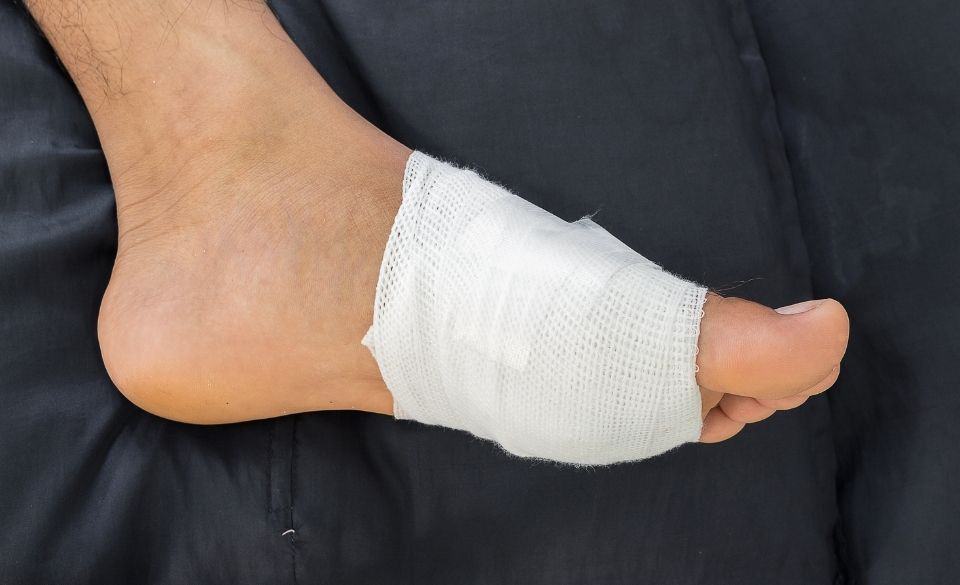
Top of Foot Pain From Running – How To Tie Laces?
Proper footwear and lacing techniques can help relieve top of foot pain while running and help prevent long-term injury.
Many studies have shown that runners with high arches are more likely to experience symptoms returning. So by choosing the correct running shoes, trying different lacing techniques for running, and using orthotics can help prevent this from happening.
If you have high arches we recommend you look into inserting an orthotic into flatter shoe shapes. Alternatively, try some lacing techniques below to help eliminate discomfort.
Experimenting in how you lace your running shoes is the easiest way to manage and avoid top of foot discomfort. Try tying the laces on the side or avoiding the eyeholes in the sore place. The two-laced approach is another lacing procedure that helps ease pressure around the top of the foot.
When lacing one shoe with the two-laced procedure, you’ll need two shoelaces.
– To do the two-laced process, start at the bottom of the shoe with one lace and work your way up.
– Stop lacing around the middle of the shoe or just below the forefoot’s midpoint.
– Take the second lace and do the same. You can then look to miss where you are experiencing discomfort.
– Finish by tying the laces to the top of the shoe. Experiment with these lacing methods to see which one fits your foot the most.
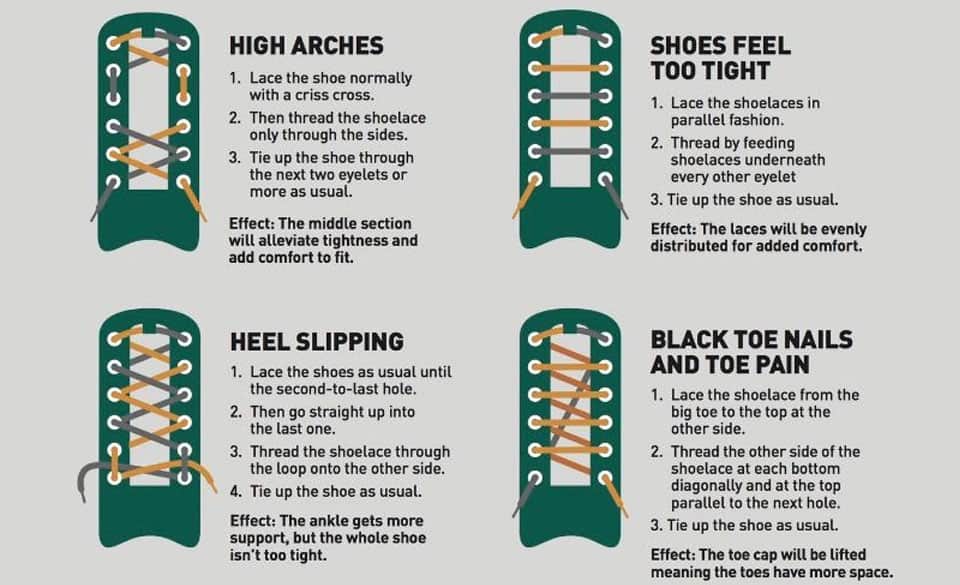
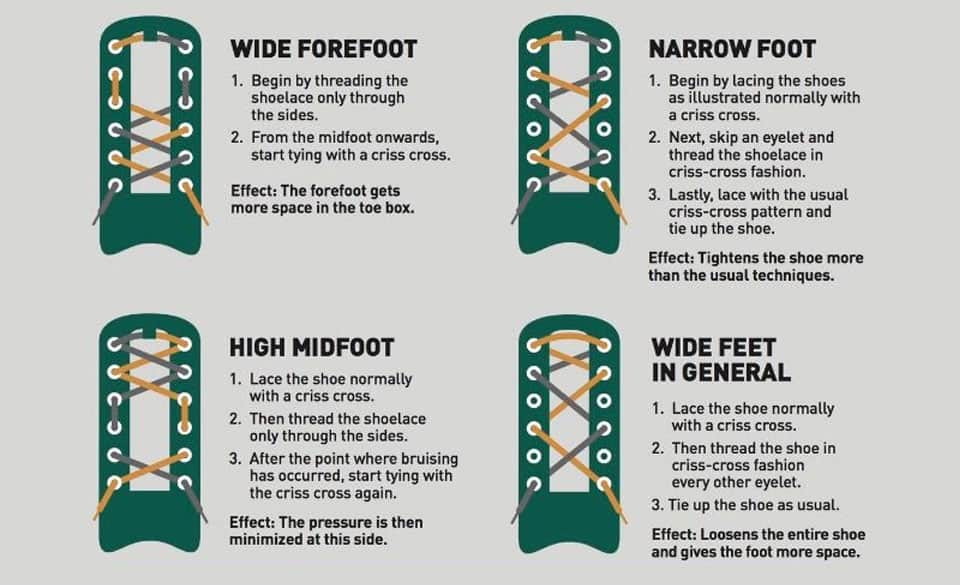
Top of Foot Pain After Running – When Should You Start Again?
If you have top-of-foot pain after running, it is better to take as much weight off your foot as possible. This gives the foot adequate time to heal and recover. Then before you try to start running again, make sure you can do the following without any pain:
– 30 minutes of walking
– For 20-30 seconds, stand on one knee.
– Perform 15-20 single knee dips.
– Perform 20 to 30 single leg calf raises.
– Able to hop on one foot.
It is wise not to start running or sign up for an event until you can comfortably pass all the above tests. Remember it’s important not to jump back into training too quickly. If walking hurts, it’s a sign that running will be the same, and if running hurts, it is wise to stop altogether. Alternatively, if you have pain while sleeping, it is time to see your doctor.
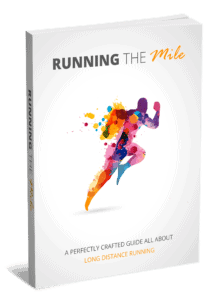

Download Running the Mile for only 8usd
“A Know-all Short Report All About Long Distance Running”



